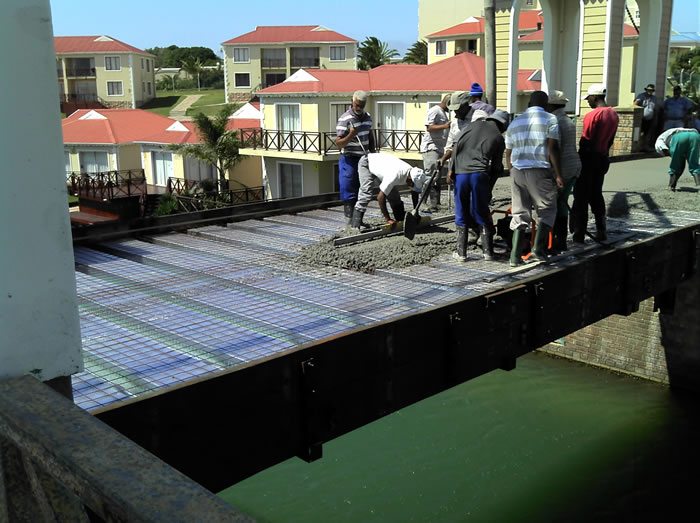Gone are the days of buildings having simple flat finishes, nowadays concrete can be poured out to a formwork and resemble a stone, brick ,tiles and a variety of other products to make the structure look more appealing to the eyes.
Concrete formwork technology has impacted the world in a tremendous way, in that it is used globally and it defines the structure of buildings while they are still in their initial stages of construction. Concrete formwork also allows concrete to be used in many applications and in more complex projects.
Designers and builders should however ensure that the formwork being used is strong and sturdy enough to carry the loads that have been produced by the concrete, workers and any other type of equipment that are used to provide further support to the forms so as to ensure satisfactory results and performance at the end of the construction.
In Africa today, many projects are being constructed using formworks. This technology has become an increasing necessity in the transformation of most countries into a first world entity with a thriving infrastructure of impressive buildings, busy freeways, massive sports stadiums and world-leading industry.
One of the featured companies; Voidcon, gave their opinion in regards to emerging trends and they said that Innovative Building Technology has a slow and steady departure from the norm which are believed to provide cost effectiveness and structurally sound speed of construction.
Different strokes
There are various types of formwork. Firstly there is the traditional formwork widely used in Africa made out of timber and plywood or moisture-resistant particle board. Though it is easy to produce, it has drawbacks because the wood has a relatively short lifespan and it is very time consuming especially for larger structures.
Growth is being seen in engineered formwork. It is built out of prefabricated modules with a metal frame mostly steel or aluminium and covered on the concrete with material having the wanted surface structure. The two major advantages of this formwork systems, compared to traditional timber formwork, are speed of construction (modular systems pin, clip, or screw together quickly) and high life span, the form can achieve up to two thousand uses depending on care and the applications.
Richard McNutt, Regional BD Manager of MFE Formwork Technology advices buyers on the advantages and benefits of Aluminium Formwork which is best in terms of the speed of construction and its quality finish. System-build formwork works best with medium-large scale developments preferably with repetition.
Plastics have also made their entry into this sector of the construction industry. They are usually used to build widely variable, but relatively simple, concrete structures. The panels are lightweight and very robust and are especially suited for low-cost, mass housing schemes.
Permanent formwork also has its uses. Most contractors use this kind of formwork because of the many advantages. They are best in terms of speed, strength, superior thermal and acoustic insulation, space to run utilities within the EPS layer, and integrated furring strip for cladding finishes.
The formwork stays in place after the concrete has cured and acts as axial and shear reinforcement, as well as serving to confine the concrete and prevent environmental effects, such as corrosion and freeze-thaw cycles.
To buy or rent
Arturo Benitez from CALDIBE, S.A which is one of the companies featured in this article, advises potential buyers that rental equipments are not always the most profitable. Special formwork solves problems more efficiently, saving time, staff and adjusting to the available resources. He also mentions the trend in this industry is that of manufacturing and implementing special custom-made formwork especially in tunnel formwork solutions, capital formworks, board’s viaducts and any special geometry (curve and complex geometries).
The company designs, manufactures and exports final solutions of special custom-made formworks and steel structure.
In conclusion, clients should view the formwork as a long term investment. It is not just for one project but can be reused for several projects when handled and applied correctly.


It’s fascinating that concrete formwork allows for more complex projects when designing and constructing buildings. I’ve heard that one of the main components of concrete formwork is formatubes. It would be interesting to see how formatubes are used to aid in concrete construction.